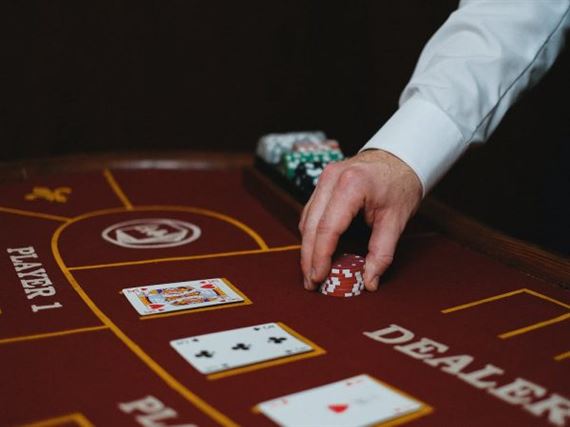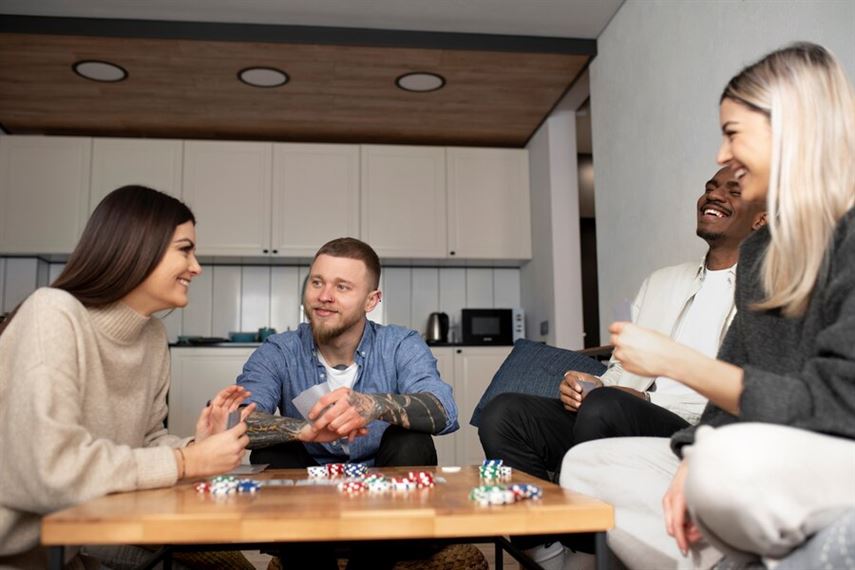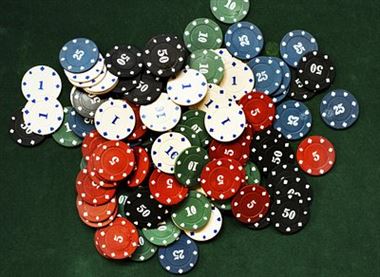In the world of poker, breaks are an essential part of the game. They allow players to recharge, refocus, and take care of personal needs. However, it is crucial for players to understand proper break etiquette to ensure a smooth and respectful gaming experience. Knowing when and how to leave and return to the table gracefully not only shows good sportsmanship but also maintains the integrity of the game. In this article, we will discuss the importance of poker break etiquette and provide guidelines on when and how to navigate breaks respectfully.
Proper Timing: When to Take a Break from the Poker Table
In the high-stakes world of poker, knowing when to take a break from the table is just as important as knowing when to make a bet. Whether you’re on a winning streak or facing a string of losses, understanding proper timing for breaks can help maintain your focus and composure throughout the game. This article will delve into the etiquette of leaving and returning to a poker table gracefully.
First and foremost, it’s essential to recognize that taking breaks during a poker game is not only acceptable but often encouraged. Poker is an intense mental game that requires concentration and strategic thinking. Sometimes, stepping away from the table can help players regain their focus and prevent costly mistakes. However, it’s crucial to be mindful of the right time to step away.
One common rule of thumb is to wait until after the current hand is over before leaving the table. Leaving in the middle of a hand disrupts the flow of the game and can irritate other players. It’s considered impolite and disrespectful to abandon your fellow players in the midst of an ongoing hand. Instead, exercise patience and wait for a suitable moment to excuse yourself.
Another factor to consider when deciding to take a break is the pace of the game. If you find yourself in a fast-paced tournament with quick rounds and minimal downtime between hands, it may be more challenging to find an appropriate moment to leave without causing inconvenience to others. In such situations, it’s advisable to plan your breaks strategically during scheduled breaks or lulls in the action.
Additionally, if you’re playing in a casino or card room where there are designated breaks, it’s best to utilize those intervals rather than abruptly leaving the table at your own discretion. These structured breaks provide an ideal opportunity for all players to refresh themselves simultaneously without disrupting gameplay.
When it comes to the duration of your break, it’s vital to be mindful of the other players at the table. Taking excessively long breaks can be seen as inconsiderate and may cause frustration among your fellow competitors. A general guideline is to keep your breaks within a reasonable time frame, such as five to ten minutes. This allows you to recharge without causing unnecessary delays or annoyance.
Returning to the poker table after a break should also be done with tact and courtesy. Avoid rushing back to your seat and disrupting ongoing play. Instead, wait for an appropriate moment between hands or during a scheduled break to rejoin the game. It’s considerate to make eye contact with the dealer or other players to signal your return before taking your seat. This simple gesture shows respect for the flow of the game and acknowledges the presence of others.
In conclusion, understanding proper timing when it comes to taking breaks from a poker table is crucial for maintaining a respectful and harmonious gaming environment. Remember to wait until after the current hand is over before leaving, plan your breaks strategically, and keep them within a reasonable duration. When returning to the table, do so discreetly and avoid interrupting gameplay. By adhering to these guidelines, you’ll ensure that your breaks are both refreshing for yourself and respectful to those around you.
Polite Exit Strategies: How to Leave the Poker Table Respectfully
Poker is a game of strategy, skill, and etiquette. While much emphasis is placed on the rules and gameplay, it’s equally important to consider the social aspects of the game. One such aspect is knowing when and how to leave the poker table gracefully.
Leaving a poker table can be a delicate situation. It’s crucial to be aware of your surroundings and the impact your departure may have on the other players. The first step in executing a polite exit strategy is to choose an appropriate time to leave.
Ideally, you should wait until after the current hand has been played before making your move. Interrupting the flow of the game by leaving mid-hand can disrupt the concentration of other players and create unnecessary tension. However, if there is an urgent matter that requires your attention, it’s acceptable to excuse yourself immediately. In such cases, it’s advisable to inform the dealer or a fellow player about your reason for leaving, so they can relay the information to others at the table.
When leaving the poker table, it’s important to do so with grace and respect. Avoid making a scene or drawing unnecessary attention to yourself. Stand up quietly, gather your belongings discreetly, and thank the other players for the game. Expressing gratitude shows good sportsmanship and leaves a positive impression on those you’re leaving behind.
Furthermore, it’s essential to handle your chips appropriately when departing from the table. If you plan to return shortly, you can simply leave your chips neatly stacked in front of your seat. This indicates to the dealer and other players that you intend to come back and continue playing. However, if you don’t plan on returning or will be away for an extended period, it’s customary to cash out your chips. Inform the dealer of your intentions, and they will assist you in converting your chips into cash.
Returning to the poker table is just as significant as leaving it. Whether you’ve taken a short break or been away for an extended period, it’s important to rejoin the game respectfully.
When returning to the table, avoid disrupting the flow of the game. Wait for an appropriate moment, such as after a hand has been completed, before taking your seat. Apologize for any inconvenience caused by your absence and thank the other players for their patience. This simple act of acknowledgment demonstrates respect for the other players’ time and ensures a smooth transition back into the game.
Additionally, be mindful of the stack sizes at the table upon your return. If you’ve missed several hands, the chip count may have changed significantly. Take a moment to assess the current state of play and adjust your strategy accordingly. It’s also courteous to ask the dealer if any specific rules or actions were introduced during your absence to ensure you’re up to date with any changes that may affect your gameplay.
In conclusion, poker etiquette extends beyond the game itself. Knowing when and how to leave and return to the poker table gracefully is essential in maintaining a positive atmosphere among players. By choosing an appropriate time to depart, handling your chips appropriately, and returning with respect, you contribute to a harmonious gaming experience for everyone involved. So next time you decide to take a poker break, remember to do so politely and gracefully.
Returning with Grace: Tips for Coming Back to the Poker Table Smoothly
In the fast-paced world of poker, it is not uncommon for players to take a break from the table. Whether it’s to grab a snack, use the restroom, or simply clear their mind, breaks are an essential part of the game. However, returning to the poker table gracefully can sometimes be a challenge. To ensure a smooth transition back into the game and maintain proper etiquette, here are some helpful tips.
Firstly, timing is crucial when it comes to returning to the poker table. It’s important to be mindful of the flow of the game and avoid interrupting any ongoing hands. Wait for a suitable moment, such as the end of a hand or when the dealer has finished distributing the cards. This shows respect for the other players and allows them to focus on their strategies without unnecessary distractions.
Once you have found the right moment to return, it is essential to do so quietly and discreetly. Avoid making any loud noises or causing disruptions that could disturb the concentration of your fellow players. Slide back into your seat smoothly and try to blend in seamlessly with the atmosphere at the table. Remember, maintaining a calm and composed demeanor is key to coming back gracefully.
Another aspect to consider is how to handle your chips upon returning. It is customary to leave your chips neatly stacked and visible while taking a break. This signals to others that your seat is still occupied and prevents confusion or misunderstandings. When you come back, make sure to rearrange your chips neatly and avoid any unnecessary movements that might create distractions or cause your chips to fall over.
Furthermore, it is crucial to catch up on missed action during your absence. Pay attention to the current pot size, recent bets, and any changes in the dynamics of the game. This will help you get back in sync with the flow of the game and make informed decisions when it is your turn to play. Avoid asking unnecessary questions about what happened during your absence, as this can slow down the game and annoy other players.
Lastly, remember that poker is a social game, and maintaining good relationships with fellow players is essential. When you return to the table, take a moment to acknowledge everyone with a friendly nod or a brief greeting. This shows respect for their presence and helps create a positive atmosphere at the table. Engaging in small talk or discussing previous hands should be done sparingly, as it can distract others from the game and disrupt the flow of play.
In conclusion, returning to the poker table gracefully is an important aspect of poker etiquette. By timing your return appropriately, entering quietly, organizing your chips neatly, staying informed about the action, and acknowledging your fellow players, you can ensure a smooth transition back into the game. Remember, maintaining a calm and composed demeanor while respecting the flow of the game will not only enhance your own experience but also contribute to a pleasant environment for all players involved. So, next time you take a break from the poker table, keep these tips in mind and come back with grace.
Maintaining Decorum: Etiquette Guidelines for Breaks during Poker Games
In the world of poker, etiquette is paramount. It is not only important to conduct oneself properly during the game but also during breaks. Knowing when and how to leave and return gracefully can make a significant difference in the overall atmosphere at the table.
One of the most crucial aspects of break etiquette is timing. It is essential to be aware of the current state of the game before deciding to take a break. Leaving the table when it’s your turn to act or when you are involved in a hand is considered rude and disruptive. Timing your departure appropriately shows respect for both the other players and the flow of the game.
Once you have determined that it is an appropriate time to take a break, the next step is to inform the dealer and the other players. Simply stating, “I’ll be taking a short break” is sufficient. There is no need to provide any further explanation unless asked. By communicating your intentions clearly, you avoid confusion and prevent unnecessary disruptions.
When leaving the table, it is customary to stack your chips neatly so that they are easily identifiable. This allows the dealer to keep track of your chips while you are away and ensures fairness when it comes to determining the size of your bets upon your return. Taking this small step demonstrates consideration for others and helps maintain order within the game.
While on break, it is essential to manage your time wisely. Keep in mind that breaks are meant to be short and should not exceed a reasonable duration. Taking an extended break without a valid reason can disrupt the rhythm of the game and inconvenience other players. Being mindful of your fellow participants will help create a harmonious playing environment.
Returning to the table gracefully is just as important as leaving it. When you are ready to resume play, wait for a suitable moment to rejoin the game. Interrupting a hand in progress is impolite and can cause frustration among the other players. Wait for the current hand to conclude, and then politely ask the dealer if you may take your seat again.
Upon returning, it is customary to announce your arrival by saying something like, “I’m back.” This simple gesture alerts the other players that you are ready to resume play and helps maintain an atmosphere of respect and courtesy. Additionally, it allows the dealer to update you on any important developments that occurred while you were away.
Lastly, remember to be mindful of your behavior when returning from a break. Avoid engaging in conversations or activities that might distract or disrupt others at the table. Keep your focus on the game and avoid unnecessary distractions. By doing so, you show respect for both the game and your fellow players.
In conclusion, maintaining decorum during breaks is an essential aspect of poker etiquette. Timing your departure appropriately, informing the dealer and players, managing your time wisely, and returning gracefully all contribute to creating a respectful and harmonious playing environment. By adhering to these guidelines, you demonstrate your understanding of proper poker etiquette and enhance the overall experience for everyone involved.
Considerate Behavior: Understanding the Importance of Poker Table Etiquette
When it comes to playing poker, there are certain unwritten rules that every player should be aware of. One aspect of poker etiquette that is often overlooked is knowing when and how to take a break from the table. Whether you need to use the restroom, make a phone call, or simply take a breather, leaving and returning to the table gracefully is essential for maintaining a respectful and considerate atmosphere.
First and foremost, it is important to understand that poker is a social game. The dynamics at the table can change drastically when a player leaves or returns abruptly. This disruption not only affects the flow of the game but also the concentration of other players. Therefore, it is crucial to be mindful of the impact your actions may have on others.
Timing is everything when it comes to taking a break from the poker table. It is generally considered good manners to wait until it is your turn to act before excusing yourself. This ensures that you do not disrupt the rhythm of the game or cause unnecessary delays. However, if an emergency arises, it is acceptable to leave immediately, as long as you inform the dealer and apologize to the other players upon your return.
In addition to timing, the way in which you leave the table is equally important. Avoid making sudden movements or causing distractions that may startle or distract your fellow players. Instead, calmly push your chair back, stand up, and politely excuse yourself. If possible, try to avoid walking behind other players while they are engaged in a hand, as this can be distracting and potentially reveal information about their cards.
While you are away from the table, it is crucial to be mindful of the time you spend on your break. Taking excessively long breaks can disrupt the flow of the game and annoy other players. Generally, it is recommended to keep your breaks short and efficient. Use the restroom quickly, make your phone call, or take a few deep breaths to clear your mind, and return promptly to the table.
Returning to the poker table gracefully is just as important as leaving it. When you are ready to rejoin the game, approach the table quietly and wait for an appropriate moment to sit back down. Avoid interrupting ongoing hands or causing unnecessary distractions. If there is a hand in progress when you return, wait until it is over before buying back in.
It is also worth noting that if you have missed blinds or antes while on your break, it is customary to pay them upon your return. This demonstrates fairness and respect towards the other players at the table.
In conclusion, understanding and practicing proper poker table etiquette is crucial for maintaining a respectful and considerate atmosphere. Knowing when and how to leave and return gracefully is an essential aspect of this etiquette. By being mindful of timing, minimizing disruptions, keeping breaks short, and paying missed blinds or antes upon return, you can ensure that you contribute positively to the overall experience for yourself and others at the poker table.




